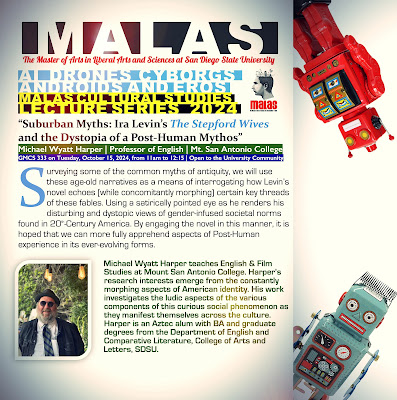For more info follow this link
Sunday, May 25, 2025
Friday, May 23, 2025
Wednesday, March 26, 2025
A MALAS Co-Sponsored EVENT!!! THURSDAY, MARCH 27, 2025 5:00 PM - 7:00 PM @LOVE LIBRARY 430-431 SKATE SESSION @ARTS-REC 8-10PM BARRIO LOGAN WOMXN IN SKATEBOARDING: Tales of the Times
THURSDAY, MARCH 27, 2025
5:00 PM - 7:00 PM
@LOVE LIBRARY 430-431
SKATE SESSION @ARTS-REC
8-10PM BARRIO LOGAN
WOMXN IN SKATEBOARDING: Tales of the Times
PANELISTS: PAIGE BELINE, DIORR GREENWOOD, AMELIA BRODKA, NATALIE PORTER, ROSIE ARCHIE, ADRIANNE SLOBOH
Tuesday, March 11, 2025
Friday, January 17, 2025
Monday, December 9, 2024
Thursday, November 7, 2024
Cool New Class Choices Via MALAS @ SDSU
Cool new choices with MALAS, the Master of Arts in Liberal Arts and Sciences at SDSU! Open to all majors and grad students at SDSU!
Posted by MALAS, the Master of Arts in Liberal Arts and Sciences at SDSU on Thursday, November 7, 2024
Sunday, October 13, 2024
Wednesday, October 9, 2024
MALAS at SDSU Proud to be a Lead Sponsor for the AGLSP 2024 Annual Conference!
2024 - [AI]GLSP: Putting the “I” in AI in the Age of Digital Cultures - Virtual conference - October 10-12
Get all the info and register here: https://www.aglsp.org/annual-conference-2024
Tuesday, August 13, 2024
Subscribe to:
Posts (Atom)


.JPG)



